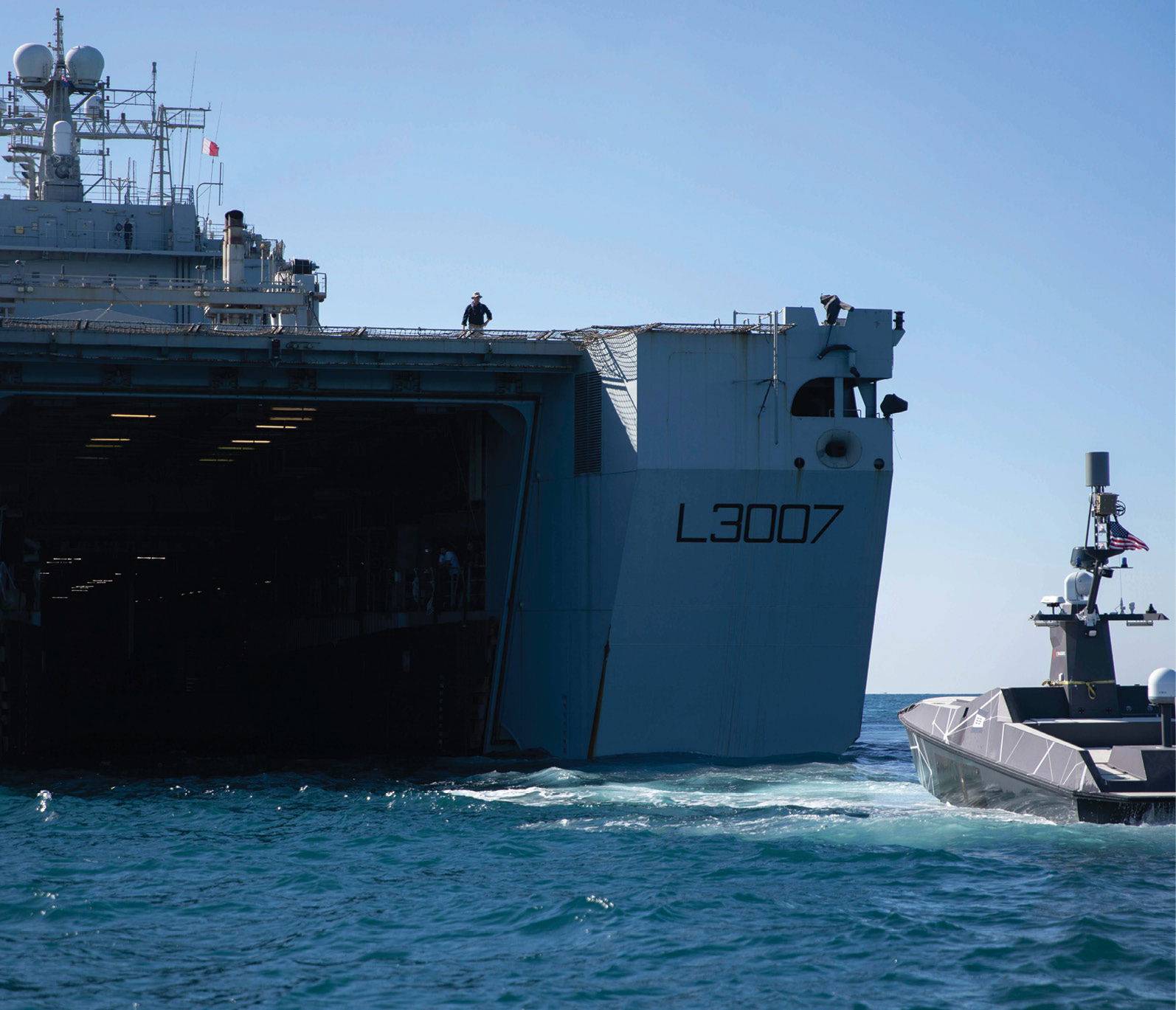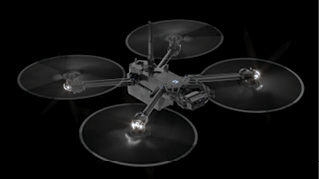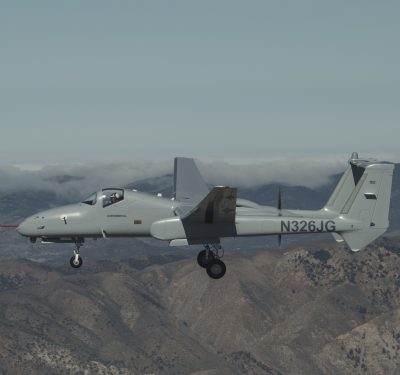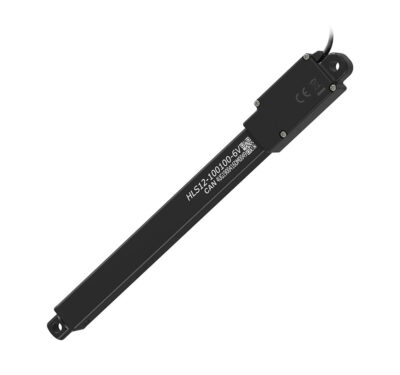
Facing new and growing challenges, the U.S. military is seeking to get technology, including unmanned systems, into the field as rapidly as possible.
The United States Navy’s 5th Fleet oversees 5,000 miles of coastline in the Middle East, which is heavily trafficked by vessels smuggling drugs and weapons. To enhance its surveillance of this vast area, the fleet last year deployed unmanned surface vessels (USVs) to boost its capability of monitoring the waterways surrounding the Arabian Peninsula.
Working alongside ships from the Navy and from a coalition of partner nations, the USVs have extended the distance ships can conduct surveillance in the region by nearly 30 times. “Having systems out there and shedding light on what is happening makes bad actors, state and nonstate alike, think twice before they engage in destabilizing activity,” said Cmdr. Tim Hawkins, spokesman for the 5th Fleet, based in Bahrain.
The process to deploy the USVs, along with unmanned underwater and unmanned aerial vehicles, by the 5th Fleet took place in seven months. This rapid development is an example of how the United States military is accelerating the adoption of drone technology from factories to the field.
The speed in integrating unmanned systems is the result of a growing recognition that to compete in international warfare in the 21st century, the U.S. military must not only add unmanned systems to its arsenal but must also adopt unmanned technology on an accelerated basis.
“At the end of the day, getting the world’s best technology into the hands of the people who are defending democracy and keeping our country safe is incredibly important,” said Mike Ross, a former Navy pilot who is chief of staff for product management at Skydio, which is producing drones for the U.S. Army. “And often times the military has been too slow to do this.”
FOCUS ON INNOVATIVE TECHNOLOGY
One way the U.S. military is accelerating the integration of new technology into the field is through the Defense Innovation Unit (DIU), established in 2015 by former Secretary of Defense Ash Carter. Last year, the average number of business days it took for the DIU to award a prototype contract was 142.
Instead of inventing new solutions to address problems in the military, DIU has focused on adopting commercial products that can be leveraged to solve operational challenges on the battlefield.
“We aren’t inventing anything from scratch,” said Matthew Borowski, joint program manager for Blue UAS Programs at the DIU. “What we’re saying is if there’s a problem and there are things that are out there in the commercial sector that can be used to fix this right now, our prototyping is taking a product and service that that company provides and then using it in a military context.”
To reduce the time to award contracts, DIU created a new procedure called the Commercial Solutions Opening (CSO), which allows the unit to more quickly execute agreements to prototype and scale commercial technologies for deployment in the Department of Defense.
“The structure itself is set up for success,” Borowski said. “It goes from being a thing in a lab to being a thing in someone’s hands to being a thing that everyone is using—our process allows for that scaling to occur.”
DIU, for example, has worked with the U.S. Army to launch the Short-Range Reconnaissance program, which provides small drones at the platoon level, and to develop a new version of the Black Hornet 3, a palm-sized UAS that will be used to conduct surveillance of buildings and confined areas.
Another initiative DIU launched to rapidly vet and scale commercial unmanned systems technology is the Blue UAS program, a response to the Department of Defense’s ban on the purchase of Chinese drones by the U.S. military. Under the program, which was started in 2020 and has since been modified, drones that comply with a list of DOD requirements are deemed Blue UAS, and can be considered for adoption across the U.S. military.
One way the program has accelerated the deployment of unmanned technology is that drones that are added to the DOD’s cleared list, for example, do not need waivers to operate in the military. “It gets out of a culture of ‘no’ into a permissive culture as long as you are using systems that are properly vetted,” Borowski said.

SHORT-RANGE RECONNAISSANCE
In 2020, DIU partnered with the U.S. Army to seek companies that could adapt commercially produced UAS to fill an operational gap in the ability of soldiers at the platoon level to gain short-range situational awareness in the field.
Platoons were previously conducting reconnaissance by sending soldiers to scope out areas of interest in the field. But by deploying a small drone that soldiers could carry in their rucksack, that surveillance could be carried out remotely.
“These assets can take off the mission load of soldiers to be able to extend the operational reach,” said Maj. Joshua McMillion, assistant product manager for the Short-Range Reconnaissance (SRR) project. Deploying a drone for reconnaissance, he adds, would also “allow maneuver commanders to make more concise decisions in a timely manner and allow them to be much more precise.”
To launch the project, the DIU used its Commercial Solutions Opening process to select a company for the project after more than 30 small UAS vendors submitted bids. Last year, the U.S. Army awarded a $100 million, five-year contract to Skydio.
Skydio, based in San Mateo, California, was launched in 2014 to produce drones that captured video of action Later, Skydio drones were used for inspections of infrastructure and overwatch capability for public safety agencies. After the SRR project was announced in 2020, the company created a team to produce the Skydio X2D, a drone that could be adapted for military use, providing up to 35 minutes of flight time on a single battery.
Under the U.S. Army’s old contracting system, the timeframe for adopting new technology, from developing the requirements, analyzing alternatives, finding materials, prototyping and finalizing the product, was five to seven years, McMillion said. The process to develop the UAS for the SRR project took two years.
The development and procurement of the UAS was accelerated in part because Skydio, along with four other drone companies, had received a Blue UAS designation from the DIU. Those five companies then became finalists in the bidding competition for the project.
Skydio developed the quadcopter by modifying its existing X2 drone—used for infrastructure inspection and public safety surveillance—by adding a higher-grade encryption to the device. The quadcopter, which the Army calls the RQ-28A, weighs a few pounds, has vertical takeoff and landing capability and a three-kilometer range.
“They needed a quadcopter that you could launch day or night that could give you color video during the day and thermal video at night so that you could have intelligence, surveillance, and reconnaissance capability at any time that you need it in the field,” Skydio’s Ross said.
Last September, the RQ-28A was fielded to special operations command and regular maneuver units for training solders at Fort Benning, Georgia, which was renamed Fort Moore this summer. By the time the Army develops a more updated UAS for second tranche in the SRR project, it will have fielded 14,000 drones, McMillion said.
“We’ll have the largest aircraft fleet in the Army when we build all of our capability and finish tranche 2,” McMillion said.
As drone technology continues to evolve, the Army wants to develop a UAS with more advanced capabilities in tranche 2, including the ability to fly for 45 minutes on a single battery, a five-kilometer operational range, a better controller, lower audible footprint, swappable payloads and better autonomy, McMillion said. The first unit equipped status for tranche 2 is scheduled for fiscal 2026, according to Army briefing documents. Competing for the work are Skydio, Teal Drones and Vantage Robotics.
George Matus, founder and CEO of Teal Drones, said the SRR program is critical not only for the military but also for the American drone industry.
“It’s an accelerated process to get American drones deployed to reduce the dependency on Chinese drones,” he said. “It’s also a good catalyst for rebuilding the U.S. industrial base as a whole.”
To continue keeping up with new technology, the Army plans to replace the drones produced for the SRR program with newer versions every two to three years. “This will always be the formula to success for us, a creative acquisition pathway every two to three years providing a new capability to the solder and replacing the older ones through attrition,” McMillion said.

NAVY TESTS THE WATERS
The Navy’s pilot project with unmanned surface vessels began in 2021, when Vice Adm. Brad Cooper, commander of the 5th Fleet, produced a two-page paper that suggested there may be an opportunity to integrate new UAS and artificial intelligence into regional maritime operations.
One factor that led to his proposal was the advances made in USVs, which had lagged behind the technical advances of aerial drones and underseas unmanned vessels over the past decade, the 5th Fleet’s Hawkins said. In addition, because the 5th Fleet leads two international maritime coalitions, it wanted to help its partner nations build their capacity with cutting-edge technology.
The 5th Fleet recognized USVs could extend the ability of its ships to monitor activity in the waterways where it operates, including the Persian Gulf, the Red Sea, Arabian Sea and parts of the Indian Ocean. A ship docked at shore, for example, can see 20 miles out to sea, but adding two USVs equipped with radar, cameras and video capability can triple the reach of the ship’s surveillance capability. When the 5th Fleet’s neighboring nations add their own USVs, the ability to monitor the waterways is multiplied 27 times, Hawkins said.
The increased monitoring acts not only as a deterrent to criminal activity on the seas, but it also places the 5th Fleet in a better position to respond to people smuggling drugs or weapons or launching an attack.
“The whole point of this is for these unmanned systems to work alongside our traditionally crewed ships,” Hawkins said. “And having that enhanced vigilance enables us to more efficiently and effectively employ those traditionally crewed ships.”
A few months after Cooper’s position paper was released, the 5th Fleet created Task Force 59, which focused on integrating unmanned systems and AI technology into daily operations. After establishing a staff for the task force, the 5th Fleet brought in its first USV a month later and planned to integrate 100 robotic boats into operations by the end of this summer.
Task Force 59 has evaluated systems including MARTAC’s Mantas T12 and Saildrone’s Explorer USVs, among others, including systems from L3Harris and Ocean Aero.
During this pilot project, the 5th Fleet has enhanced its visibility above, on and below the seas by also deploying unmanned aerial vehicles and unmanned undersea vehicles. At the end of 2022, the 5th Fleet held a three-week unmanned and artificial intelligence exercise with 17 industry partners called Digital Horizon, which included demonstrating a UAS that created a mesh network to connect multiple sources in the fleet.
The mesh network, Hawkins said, “provides a resilient capability for our unmanned systems to transmit data not only between one another but back to operational command centers ashore and operational centers on the crewed ships themselves.”
The unmanned systems pilot project in the 5th Fleet will be replicated in other fleets in the Navy, Hawkins said. The next fleet that plans to launch a task force to integrate UAS and AI into maritime operations is the 4th Fleet in Central and South America.
What is critical to the project’s success, Hawkins said, is accelerating the process to deploy the technology. While it would typically take months to make hardware changes, he said the 5th Fleet has done it in weeks, and while it would take weeks to make software changes, the fleet has done it in hours.
The rapid deployment of the technology “was all done on the premise that speed matters,” he said. “In order to employ the latest and the most capable cutting-edge technology in this field—it’s constantly evolving, and to stay with it, you have to move quickly.






